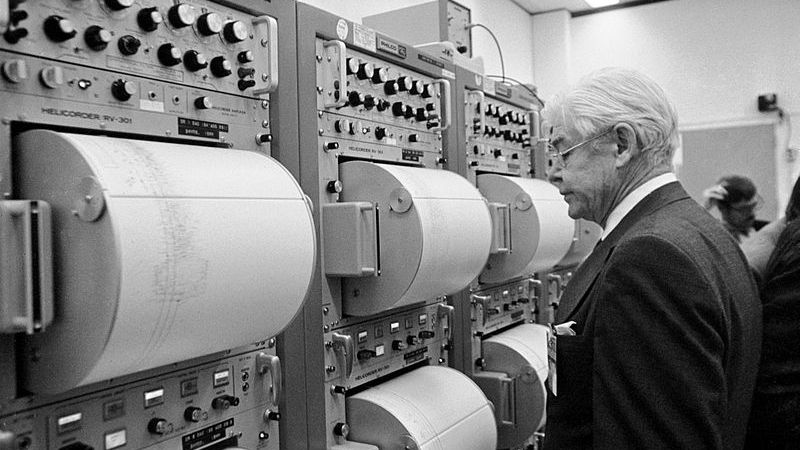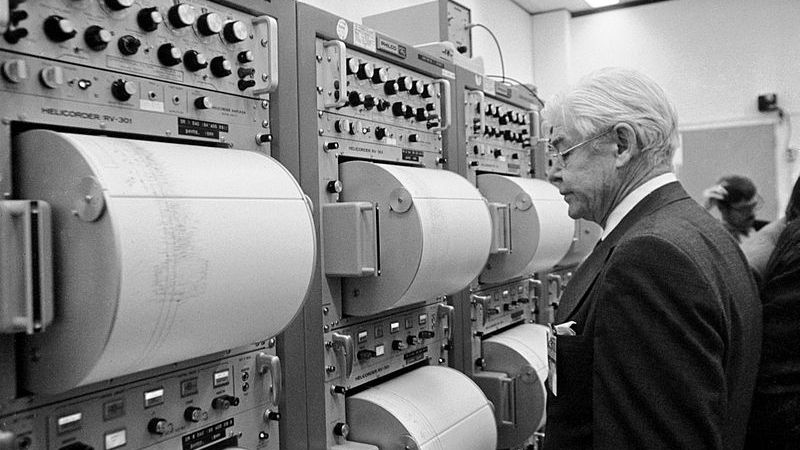
When they went to the moon, Apollo astronauts placed seismometers on the surface. Those instruments strikingly revealed that the moon experiences moonquakes, just as the Earth experiences earthquakes. In fact, scientists have since determined there are four types of moonquakes: Deep, shallow, thermal and the kind stemming from meteorite impacts.
But a new look at thermal earthquake data recorded by instruments from the Apollo 17 mission has unveiled a fifth and unexpected type of moonquake — one that emanates from the Apollo 17 lunar lander base itself.
During the Apollo 17 mission, scientists calibrated three seismometers to record thermal earthquakes on the moon. Placed on the lunar surface, these devices recorded data from October 1976 to May 1977. Such thermal quakes are caused by intense temperature changes that occur on the moon as it transitions from the lunar day to lunar night, which can swing from 250 degrees Fahrenheit (121 degrees Celsius) to -208 degrees Fahrenheit (-133 degrees Celsius).
Using modern techniques, including machine learning, researchers from the California Institute of Technology reanalyzed the data, determining that thermal quakes occur with very precise regularity the day. But, they also found new tremors in the data that weren’t linked to the thermal quakes — ones that only occurred in the morning.
Related: Moon rock collected by Apollo 17 astronauts reveals new details about lunar evolution
Triangulating the origin of the mystery quakes, researchers surprisingly realized they came from the Apollo 17 lunar lander base, which expands and vibrates each morning as it becomes heated by the sun.
“Every lunar morning when the sun hits the lander, it starts popping off,” Allen Husker, a Caltech research professor of geophysics who worked on the project, said in a statement. “Every five to six minutes another one, over a period of five to seven Earth hours. They were incredibly regular and repeating.”
So while these new moonquakes might not be moon-generated quakes, they’re still contributing to our seismic knowledge of the celestial body — and that’s particularly important for future lunar development.
“It’s important to know as much as we can from the existing data so we can design experiments and missions to answer the right questions,” said Husker. “The Moon is the only planetary body other than the Earth to have had more than one seismometer on it at a time. It gives us the only opportunity to thoroughly study another body.”
Related stories:
A new seismic instrument just landed on the moon last month with India’s Chandrayaan 3 Lander, and it managed to record its own evidence of moonquakes. The Instrument for Lunar Seismic Activity (ILSA), comprising six high-sensitivity accelerometers, recorded a seemingly natural moonquake on August 26, 2023 — though the source is being investigated. Chandrayaan-3 entered sleep mode on Sept. 2 in preparation for the lunar night.
Through further lunar seismic research, “[w]e will hopefully be able to map out the subsurface cratering and to look for deposits,” said Husker. “There are also certain regions in craters at the Moon’s South Pole that never see sunlight; they are permanently shadowed. If we could put up a few seismometers there, we could look for water ice that may be trapped in the subsurface; seismic waves travel slower through water.”
The team’s research was published in the Journal of Geophysical Research – Planets on September 5.



